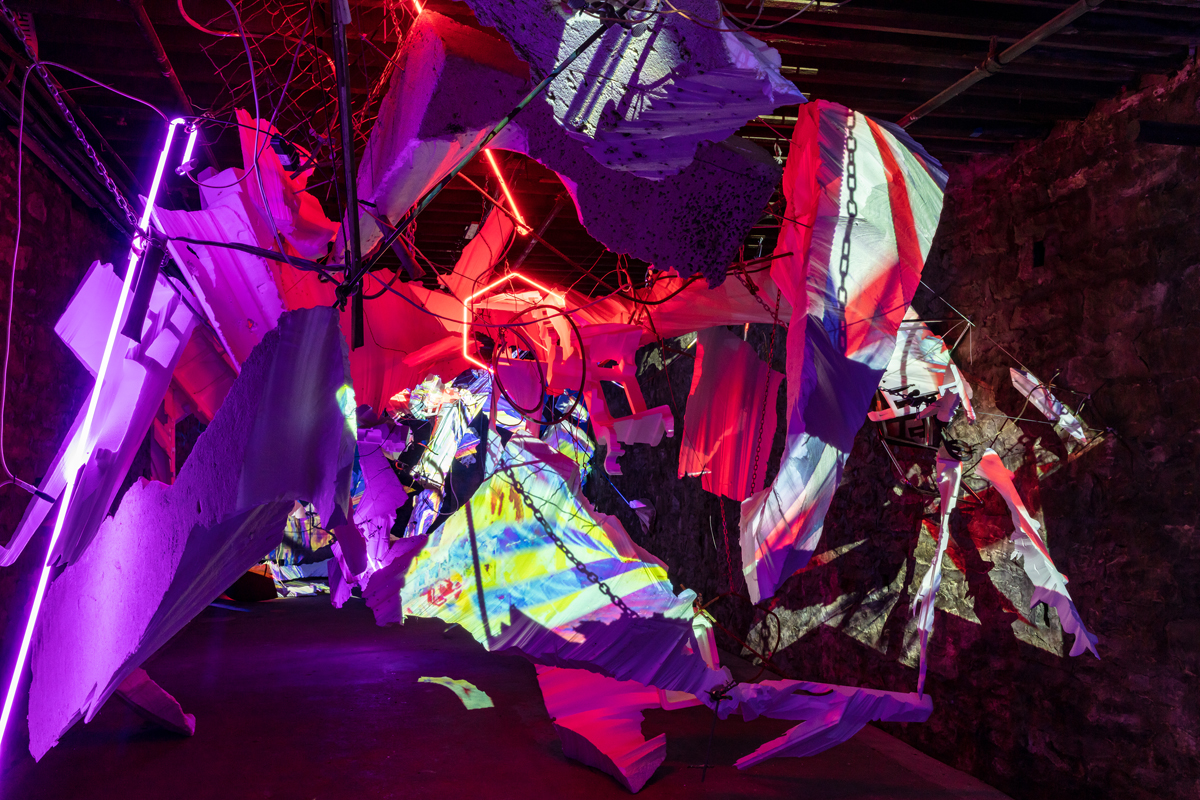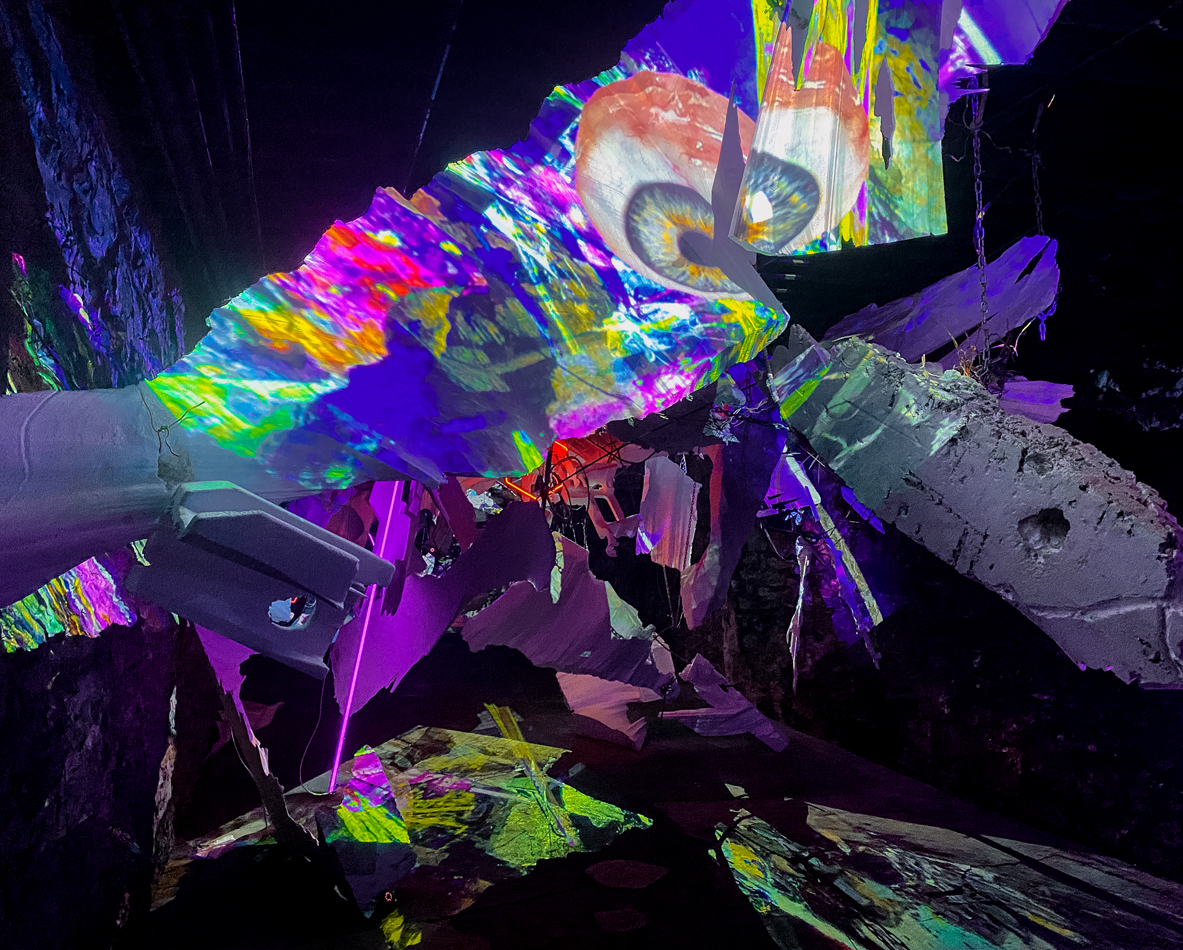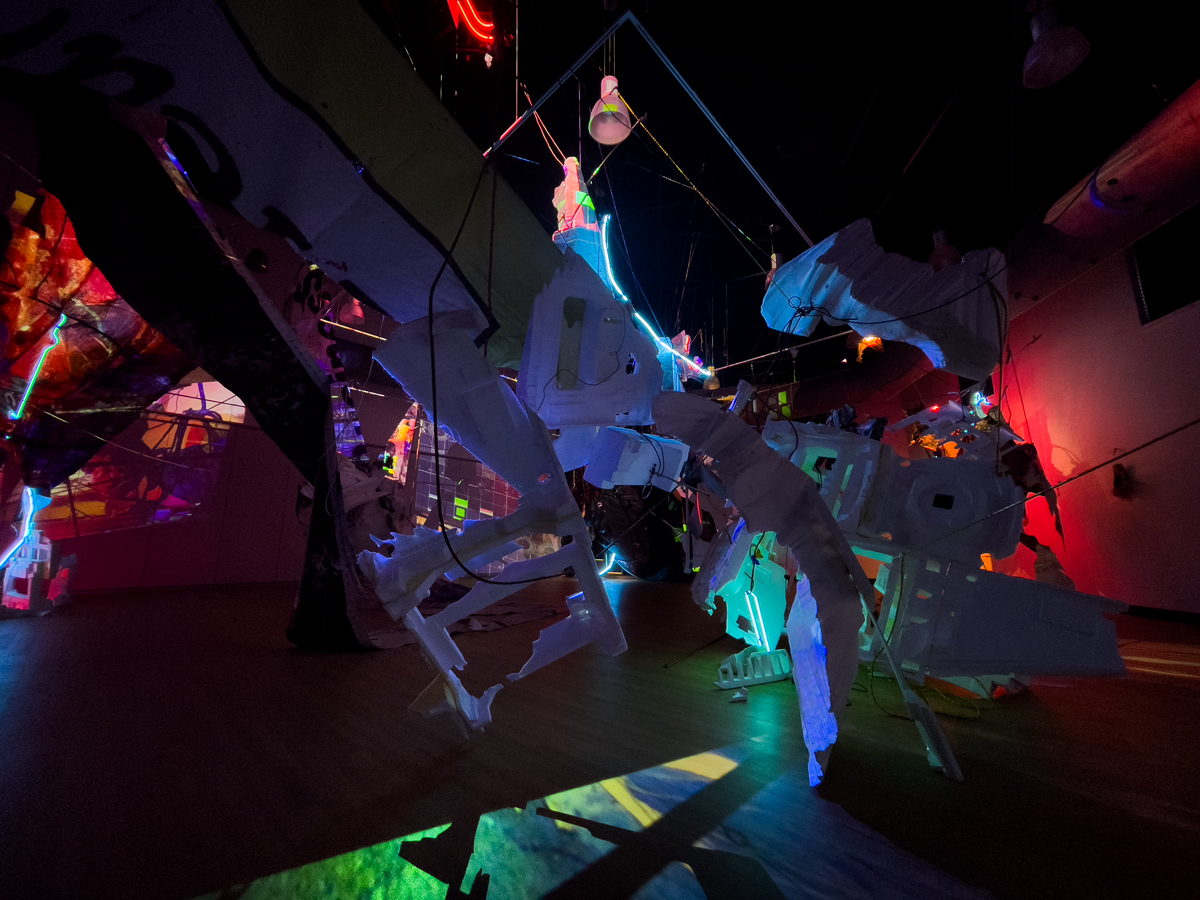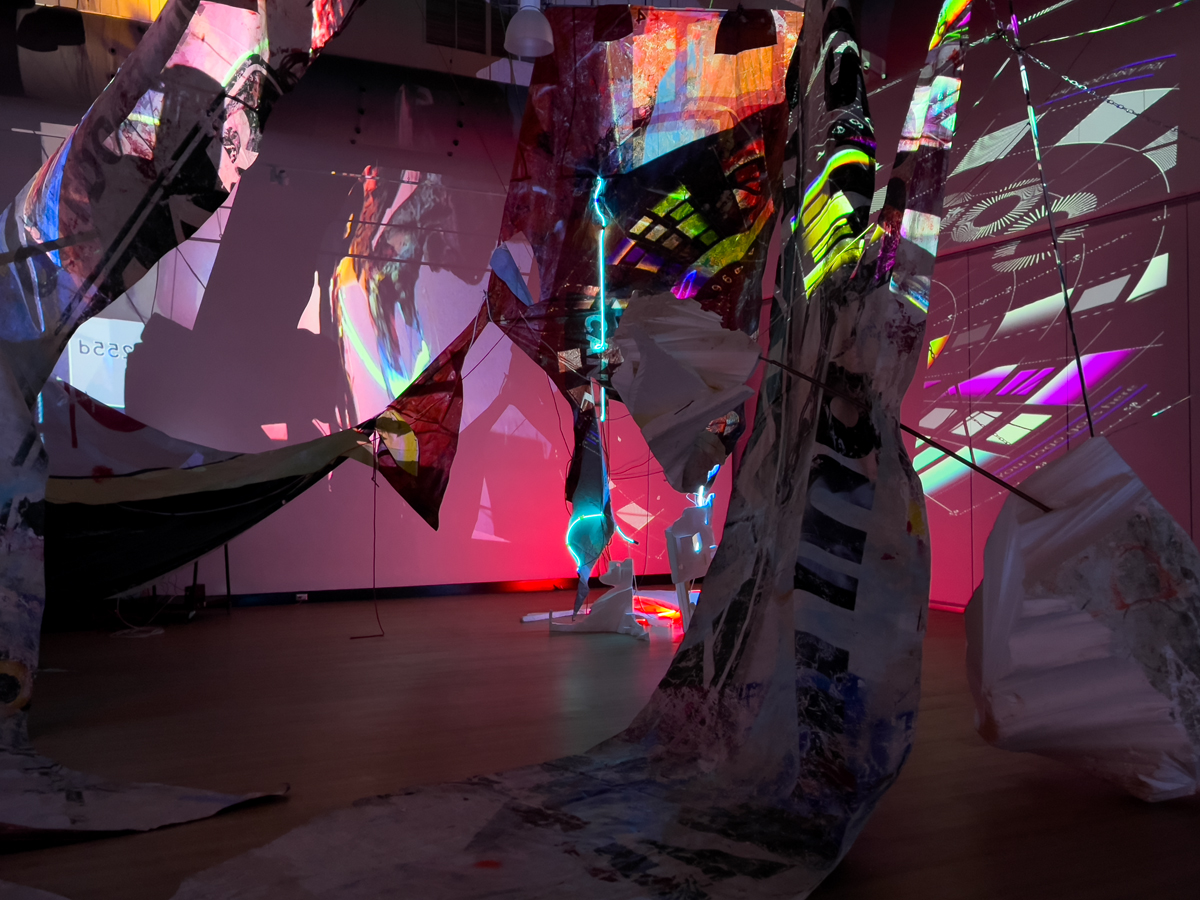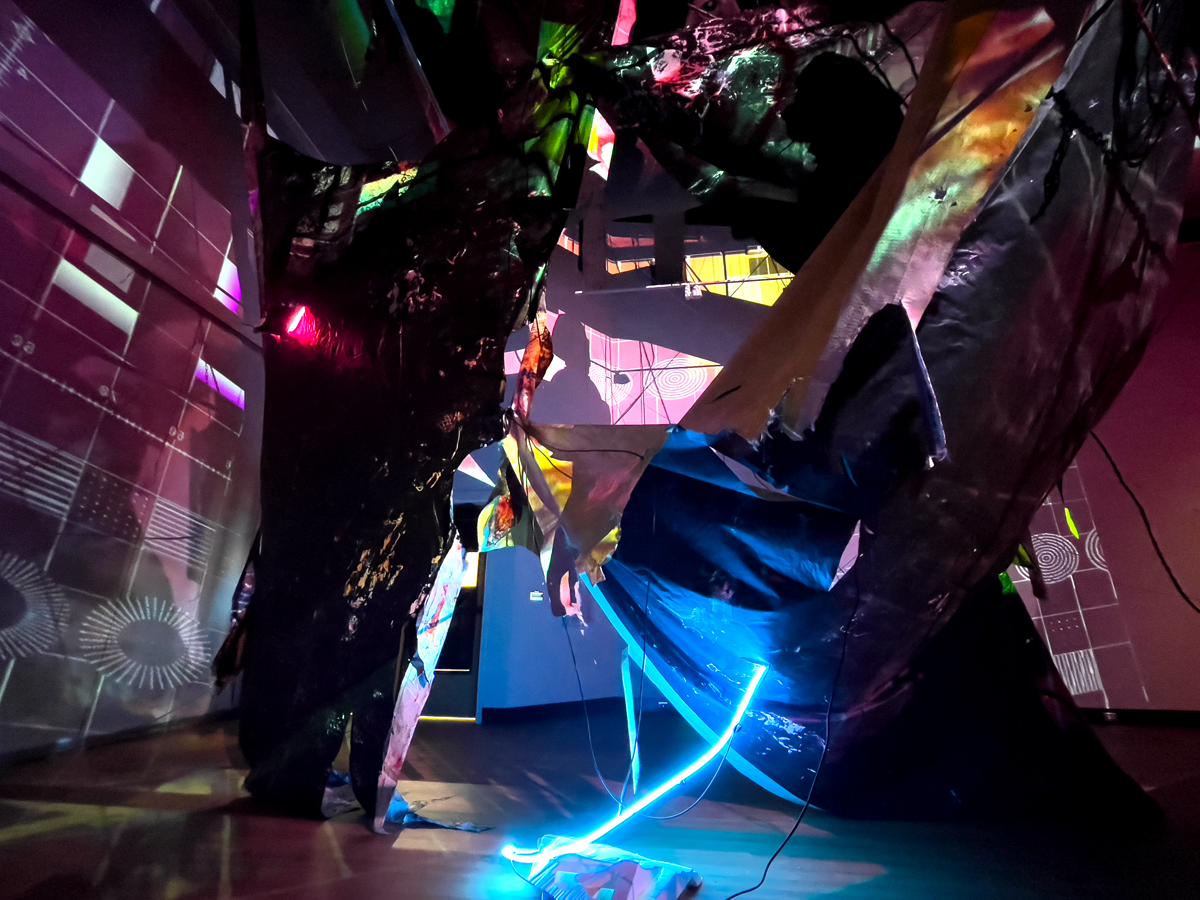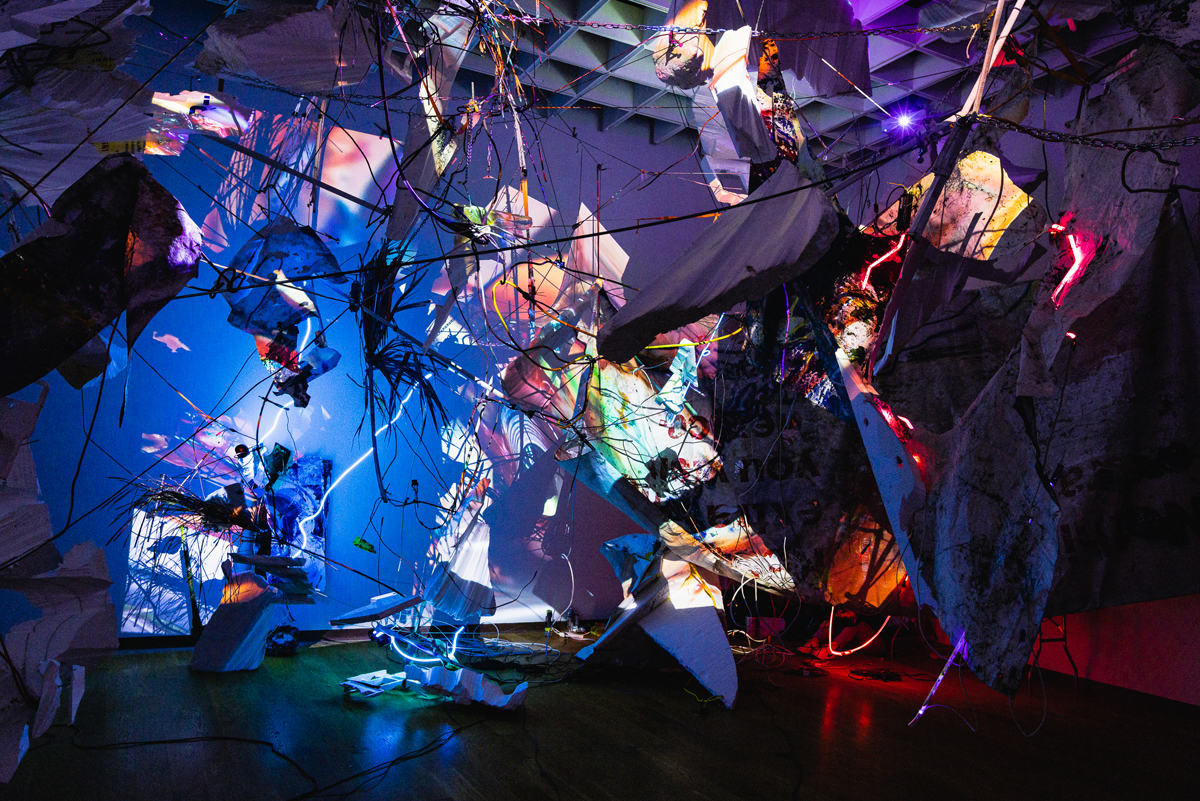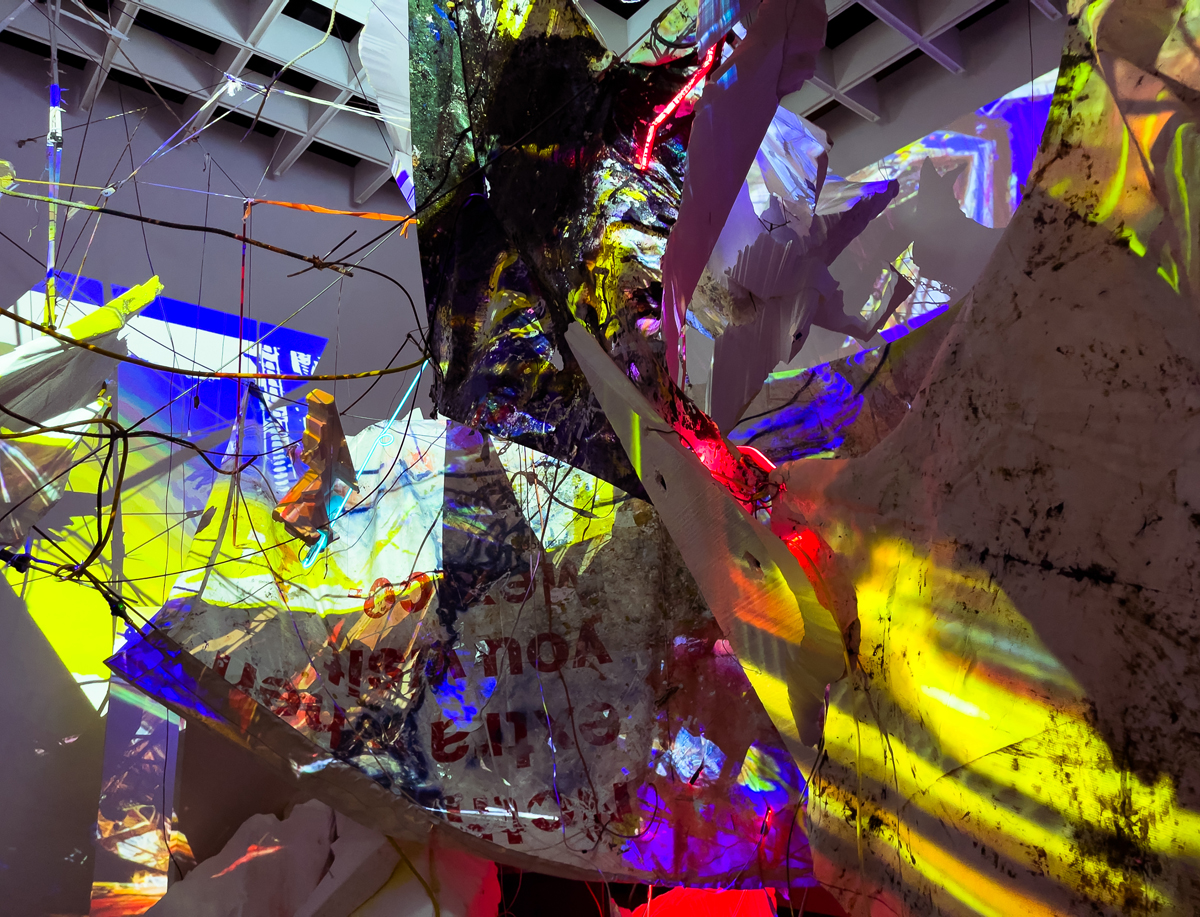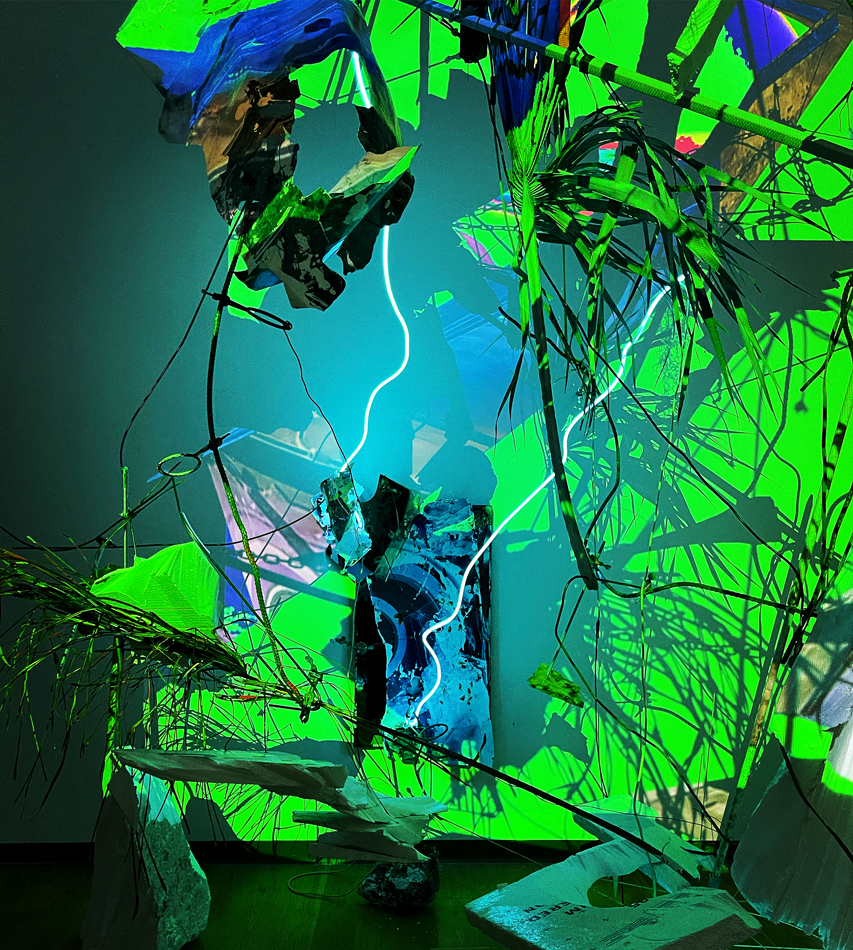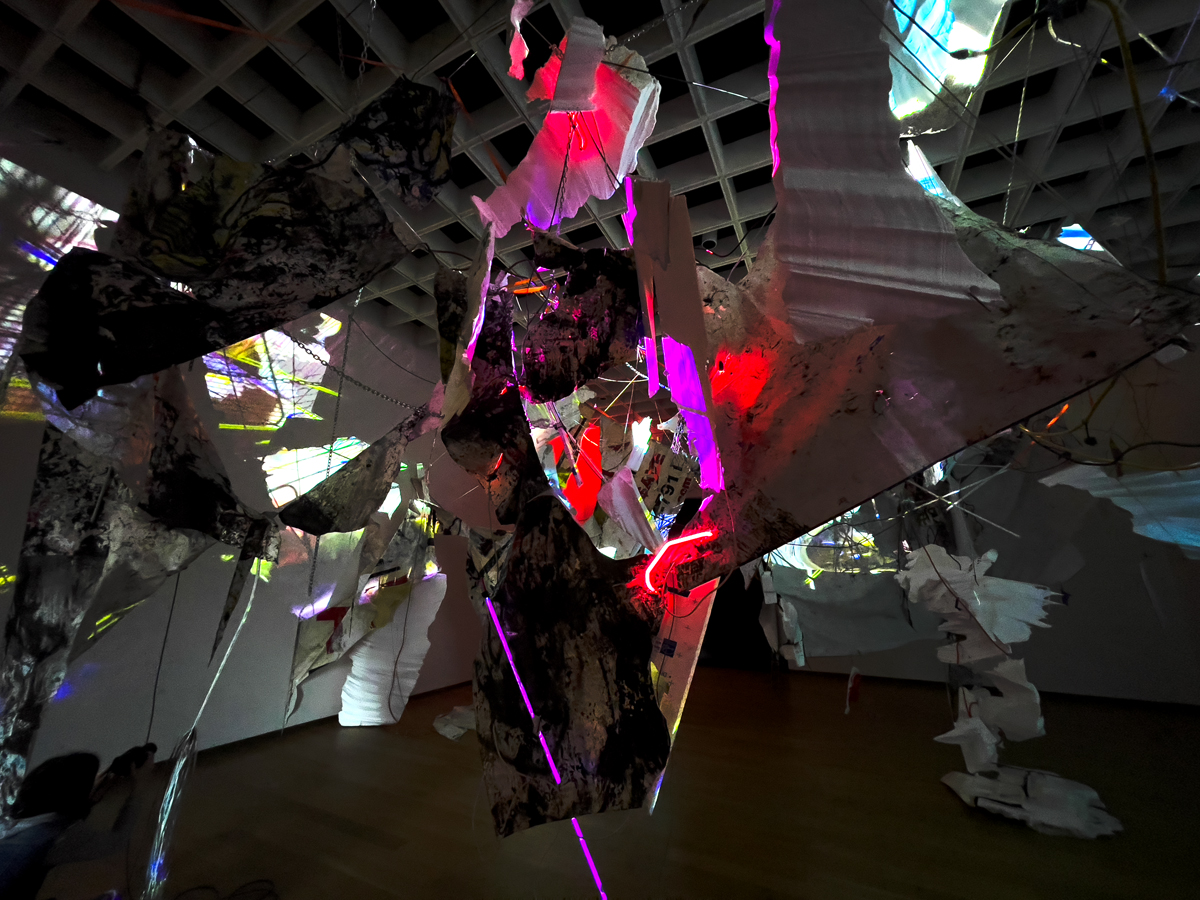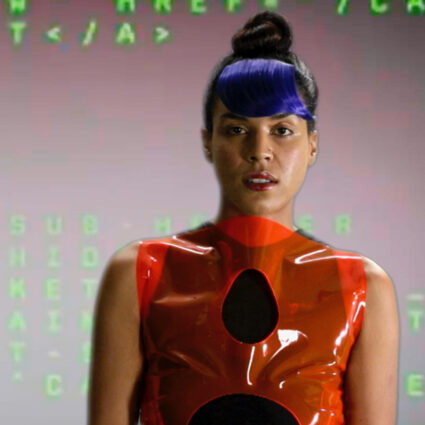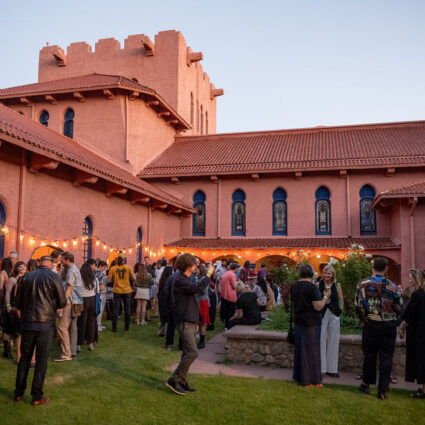Tra Bouscaren blends critiques of waste culture with “dark beauty” in maximalist installations that speak to 21st-century paranoia.

Phoenix, Arizona | tra-bouscaren.com | @tra_bouscaren
Grounded in intersections of philosophy and art, Arizona-based artist Tra Bouscaren creates suspended installations that combine consumer waste—such as demolition debris, e-waste, and billboards—with technology, prompting reflection on radical futures scarred by human actions. “I’m using spectacle to critique the spectacle of contemporary life,” he says, referencing the idea that representation has replaced authenticity.
Fomenting an apocalyptic vision of climate change, late-stage capitalism, and the surveillance state, Bouscaren layers his detritus-laden assemblages with digital projections created by manipulating imagery of people approaching his installations, which he captures through surveillance equipment built into the work. It’s a means of “implicating the viewer in waste culture” but also speaks to the experience of paranoia that informs 21st-century life.
Bouscaren cites a wide range of art-historical and pop culture influences, including the dazzle camouflage used on British ships in World War I and the retro-futurist dystopian cinema of the 1980s. Artists who’ve inspired him include El Greco, Sam Gilliam, Eva Hesse, Nam June Paik, Cornelia Parker, and many more.
Likening his process to painting in the expanded field, Bouscaren says his work can also be read as “an externalization of bipolar experience.” Lately, he’s been working more with sculpture and other media, collaborating with Arizona-based cancer researcher Ana Gervassi to create metallic photographic prints using his own fingerprints to represent genetic mutation, and working with a sound engineer to make a harp for Noël Wan using car parts. Throughout Bouscaren’s body of work, concepts promulgated by Guy Debord, Martin Heidegger, Henri Bergson, and other philosophers abound.
Bouscaren has studio space at Arizona State University, where he is an assistant professor at the School of Humanities, Arts, and Cultural Studies. He is also the director of the Expanded Media Lab, an international transdisciplinary collaboration. “I’m kind of an idea monster,” says Bouscaren. “I want people to see a dark beauty in my work.”
